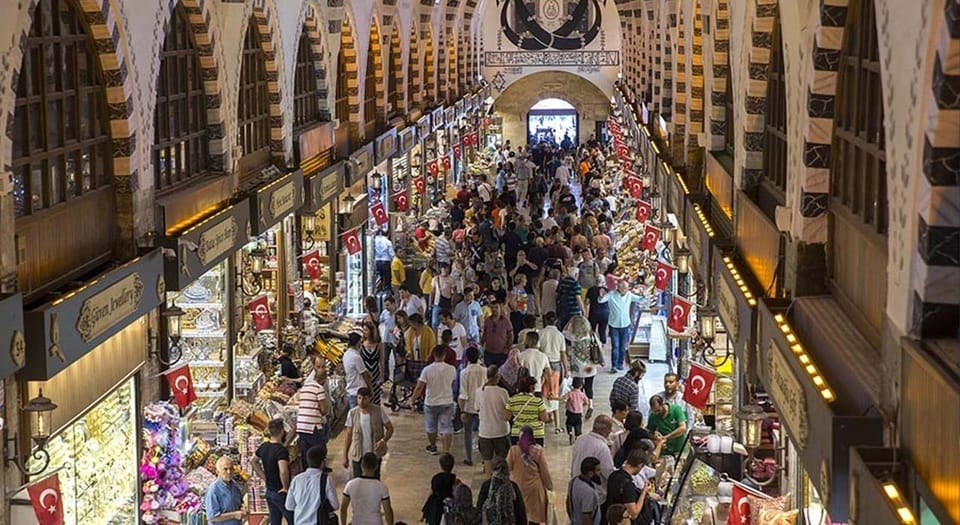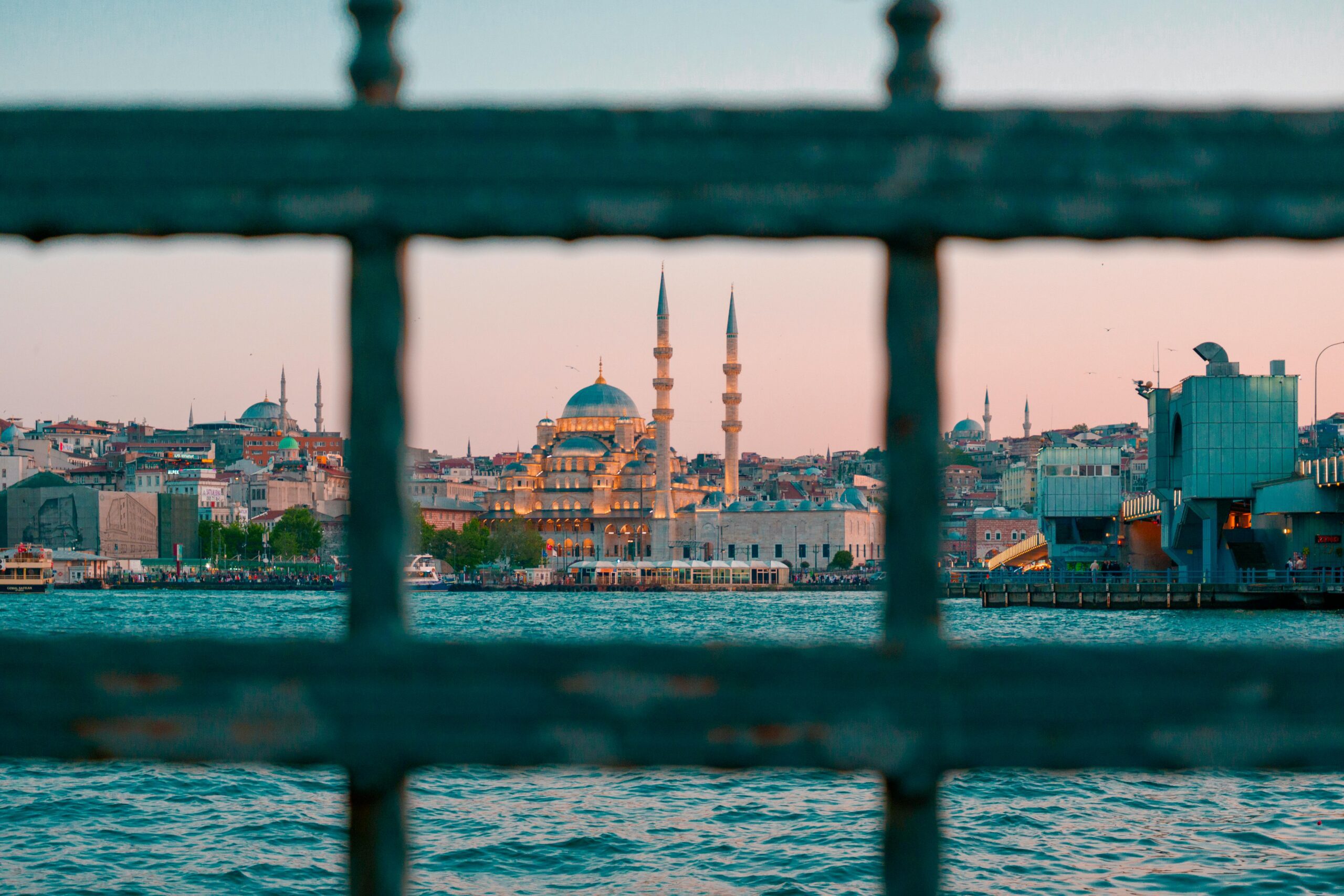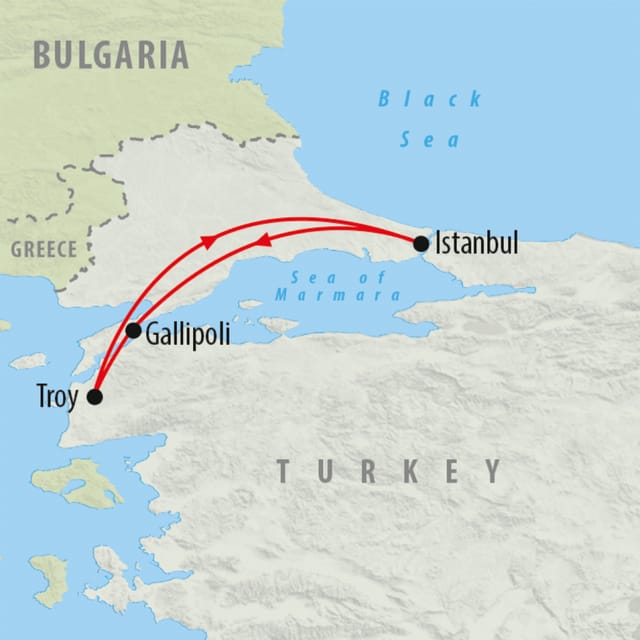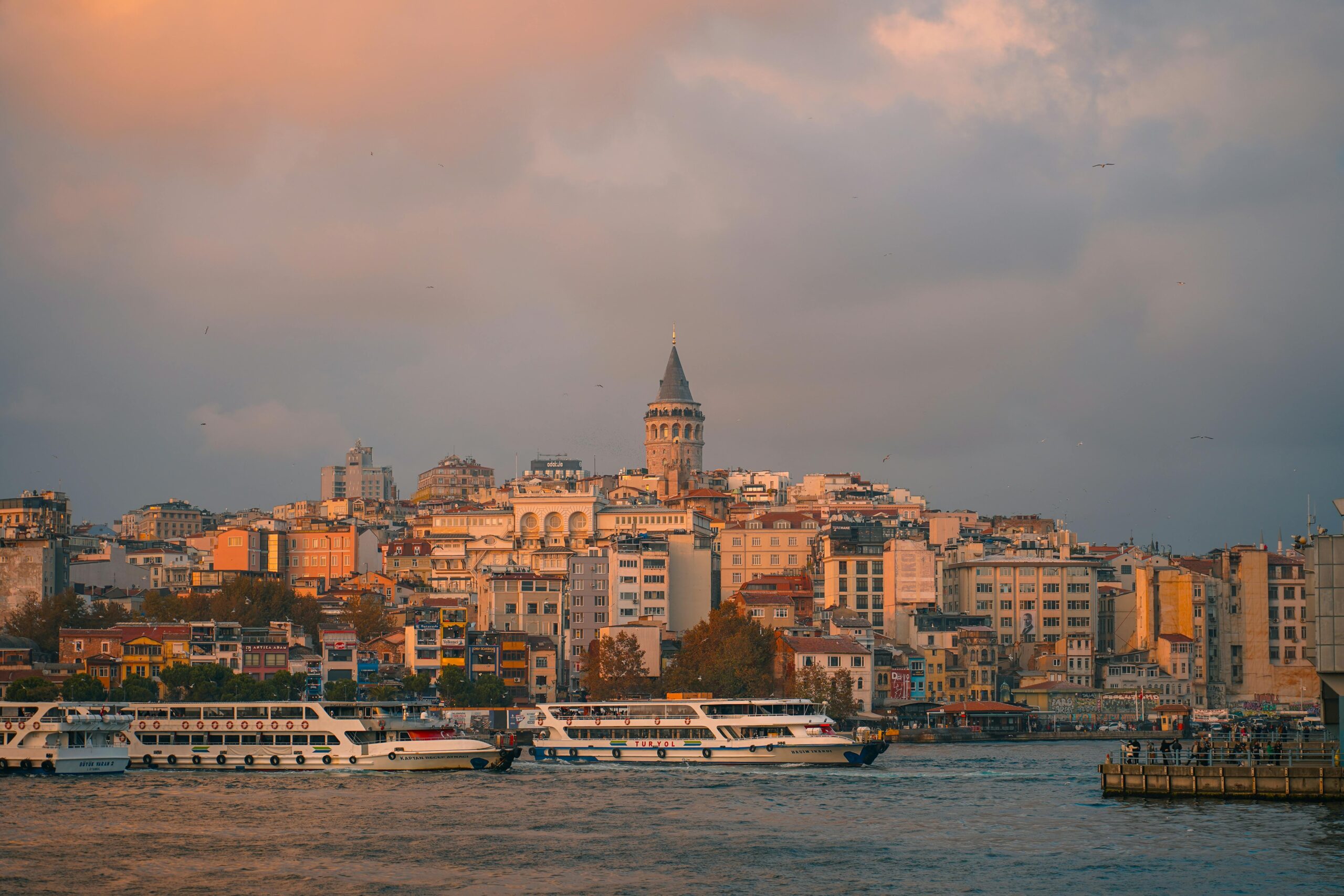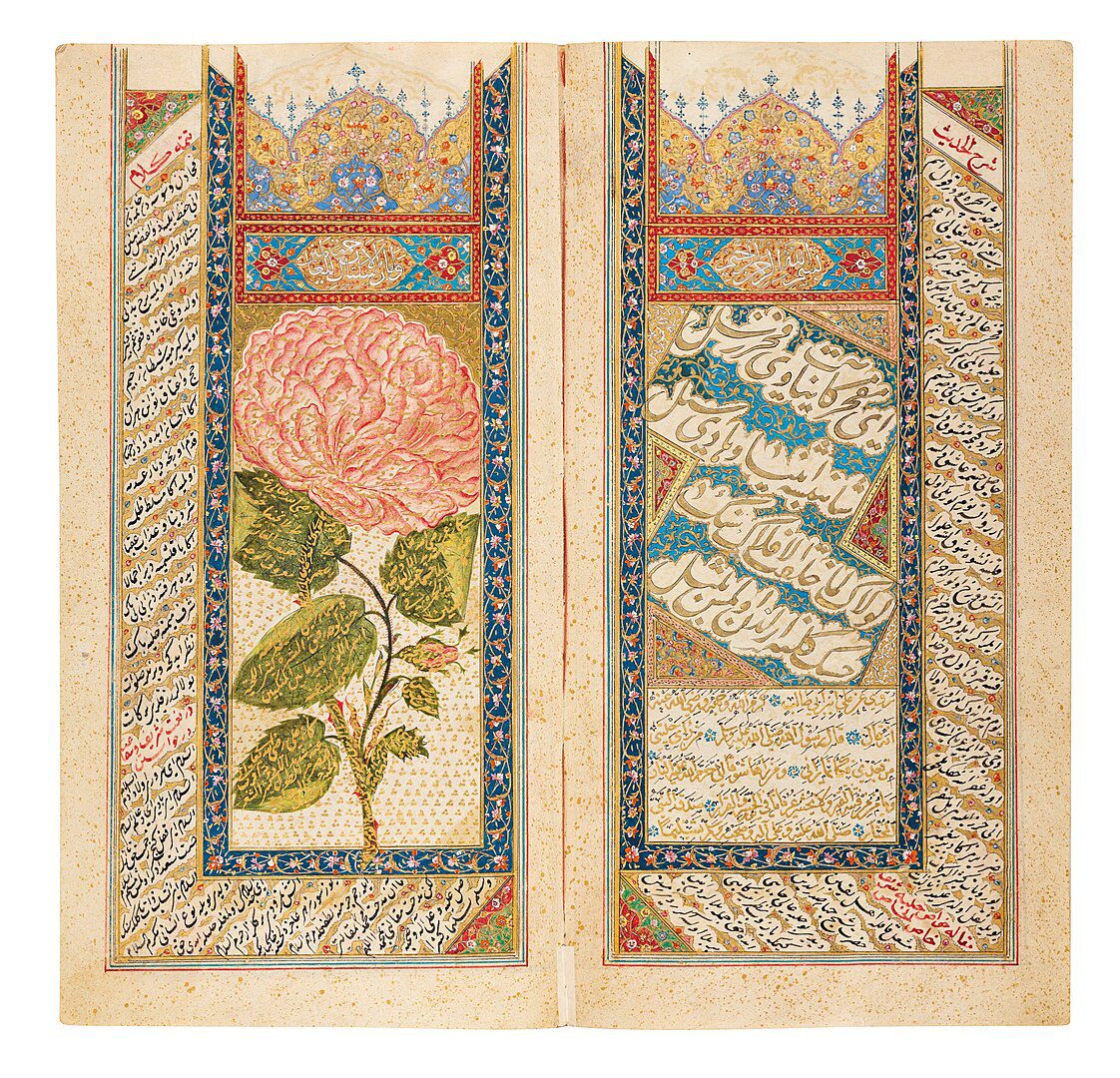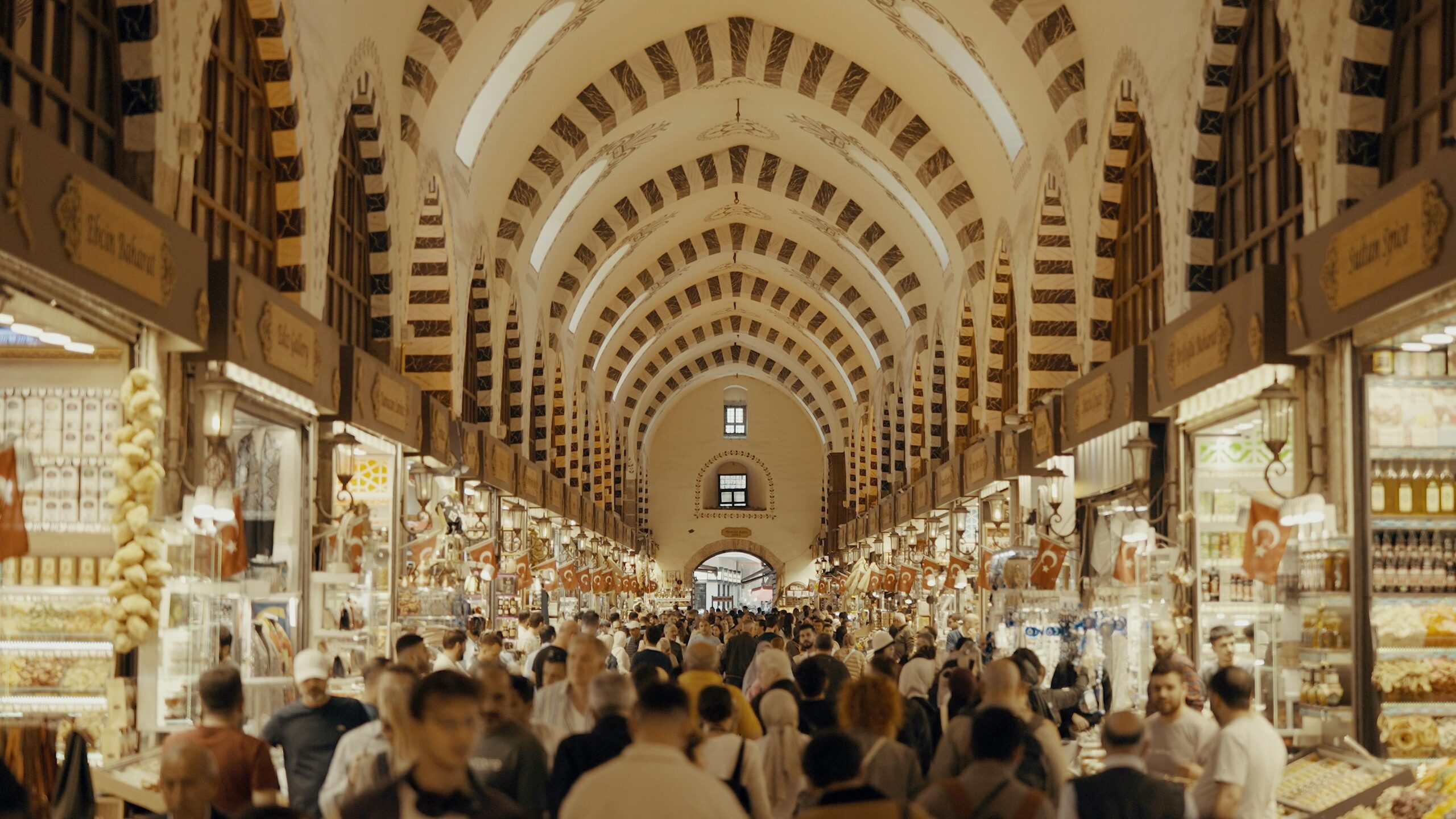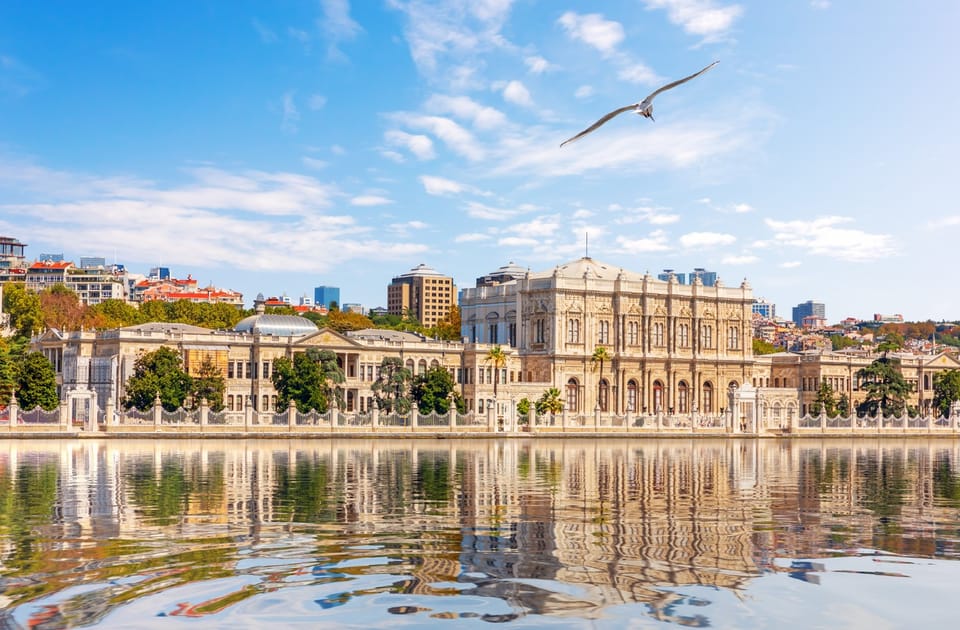A Feast for the Senses: Your Ultimate Guide to Istanbul’s Historic Spice Market (Mısır Çarşısı)
Step into Eminönü, and even before you see it, you’ll likely sense its presence. A captivating blend of exotic aromas – sweet, pungent, earthy, and floral – drifts through the bustling square, beckoning you towards one of Istanbul’s most iconic and beloved landmarks: the Spice Market, known locally as Mısır Çarşısı. This historic bazaar is more than just a place to shop; it’s an immersive journey into the heart of old Istanbul, a vibrant kaleidoscope of colors, scents, and flavors that has enchanted visitors for centuries. This Mısır Çarşısı guide is your invitation to explore its storied past, uncover the myriad of Turkish spices and sweets and other aromatic treasures nestled within its ancient walls, and learn how to make the most of your visit to this unforgettable sensory haven. Prepare to be captivated by the authentic charm of the Spice Market Istanbul.
A Storied Past: The Rich History of the Mısır Çarşısı
The Mısır Çarşısı, or Egyptian Bazaar, boasts a history as rich and flavorful as the goods it houses. Its origins date back to the 17th century, with construction beginning in 1597 and completing around 1664. It was commissioned as an integral part of the Yeni Camii (New Mosque) complex, a common Ottoman practice where bazaars were built to generate revenue for the upkeep of the mosque and its charitable institutions, such as a school, public baths, and a hospital.
The market earned its name “Mısır Çarşısı” (Egyptian Bazaar) because it was largely endowed with the revenues from Ottoman-controlled Egypt; a significant portion of the spices and goods sold here, like coffee and medicinal herbs, were traditionally imported from or via Egypt and the East. For centuries, it was the epicenter of Istanbul’s spice trade, a vital commercial hub where exotic ingredients from distant lands arrived by sea and land, filling the air with their precious fragrances. It wasn’t just spices; the bazaar was also renowned for natural medicines, herbal remedies, and even aphrodisiacs, making it a crucial stop for apothecaries and physicians of the era.
Over the centuries, the Spice Market has witnessed numerous historical events and has survived several fires, most notably in 1691 and 1940, after which it underwent significant restorations. Despite these changes and the modernization around it, the Mısır Çarşısı has retained its essential character and continues to be a vibrant marketplace, drawing both locals stocking their pantries and curious travelers eager for a taste of Ottoman Istanbul’s mercantile spirit.
Stepping into an Aromatic Wonderland: The Atmosphere & Architecture
Entering the Spice Market is like stepping into another world, one that immediately engages all your senses. The air itself is thick with a symphony of competing yet harmonious aromas: the sharp tang of sumac, the sweet perfume of rose-flavored Turkish delight, the earthy depth of cumin and turmeric, the comforting scent of freshly ground Turkish coffee, and the delicate fragrance of countless herbal teas.
Visually, it’s a vibrant spectacle. Pyramids of brightly colored spices – deep reds, sunny yellows, rich browns, and verdant greens – are artfully displayed. Mountains of glistening Turkish delight in every imaginable flavor and hue beckon from shop windows, alongside meticulously arranged piles of dried fruits like apricots, figs, and dates. Strings of dried peppers and aubergines hang like festive decorations, while traditional lanterns and colorful ceramic bowls add to the visual feast.
The architecture of the Mısır Çarşısı contributes significantly to its unique atmosphere. It was designed in a classical L-shape, a common layout for Ottoman bazaars, with a long main arm and a shorter one. Its stone walls, high vaulted ceilings, and series of domes create a sense of historic grandeur and enclosure, a world unto itself. The traditional wooden shopfronts, often adorned with intricate details, further enhance its old-world charm. Despite the constant thrum of activity – the calls of vendors, the chatter of shoppers, the clinking of tea glasses from tiny stalls – there’s an undeniable magic to the bustling energy that makes the Spice Market an unforgettably immersive Istanbul experience.
Treasures of the Bazaar: What to Discover and Buy in the Spice Market
The Mısır Çarşısı is a veritable Aladdin’s cave for foodies, tea lovers, and anyone seeking authentic Turkish products. While spices are its namesake, the bazaar offers a dazzling array of other delights. Here’s a guide to the treasures you can expect to find:
Spices Galore: From Familiar Scents to Exotic Turkish Blends
Naturally, the heart and soul of the Spice Market Istanbul lie in its incredible selection of spices. While you’ll find familiar staples like cumin (kimyon), mint (nane), oregano (kekik), thyme (dağ kekiği), and paprika (kırmızı biber), this is your chance to explore more unique Turkish spices and blends that can elevate your cooking.
-
Must-Try Turkish Spices:
- Sumac (Sumak): A tangy, lemony spice made from dried berries, perfect for sprinkling on salads, kebabs, or mixing into yogurt dips.
- Pul Biber (Aleppo Pepper): Flaked red pepper with a moderate heat and a slightly sweet, fruity flavor. A staple in Turkish cuisine, used in everything from soups to meat dishes.
- İsot Biber (Urfa Pepper): A dark, purplish-black chili pepper flake from the Urfa region, known for its smoky, earthy, and almost chocolatey flavor with a mild, lingering heat.
- Saffron (Safran): You’ll find both Turkish and Iranian saffron, prized for its color, aroma, and flavor in rice dishes, desserts, and teas.
- Ottoman Spice Blends (Osmanlı Baharatı): Many vendors create their own secret spice mixes, often referred to as “Ottoman spice” or “palace spice,” which can include a complex blend of ingredients like cinnamon, cloves, allspice, ginger, and more. These are fantastic for meat rubs or adding an exotic touch to stews.
-
Tips for Buying Spices:
- Look for Freshness: Vibrant colors and strong, distinct aromas are good indicators of freshness. Avoid spices that look dull or have a faint scent.
- Whole vs. Ground: Whenever possible, buy whole spices and grind them yourself just before use for maximum flavor and longevity. However, good quality pre-ground spices are also readily available.
- Vacuum Packing: Most vendors offer vacuum-packing services, which is excellent for preserving freshness during your travels home. Don’t hesitate to ask for it.
Sweet Indulgences: A Paradise for Lovers of Turkish Delight & More
Prepare your sweet tooth, because the Spice Market is a paradise for anyone who appreciates traditional confections, especially world-famous Turkish spices and sweets.
- Turkish Delight (Lokum): You’ll be mesmerized by the sheer variety of lokum on display – a glittering mosaic of colors and textures. Classic flavors include rosewater, lemon, and mint, but the real stars are often those studded with nuts like pistachios (Antep fıstığı), hazelnuts (fındık), or walnuts (ceviz). Look for “çifte kavrulmuş” (double-roasted) varieties for an extra intense nutty flavor, or those filled with kaymak (clotted cream) for a truly decadent treat.
- Choosing Quality Lokum: Good quality lokum should be soft and slightly chewy, not hard or overly sugary. Natural colors are usually a better sign than bright, artificial ones. Many shops will offer you a sample, so take the opportunity to taste before you buy.
- Dried Fruits & Nuts: The displays of dried fruits are just as impressive as the spices. You’ll find plump Turkish apricots (kayısı), sweet figs (incir), flavorful dates (hurma), tangy sour cherries (vişne), and chewy mulberries (dut). Mountains of high-quality pistachios, hazelnuts, walnuts, and almonds are also available, often roasted and lightly salted, or raw.
- Halva (Helva): While not as dominant as lokum, you can often find delicious blocks of tahini-based halva, sometimes plain or studded with pistachios or cocoa.
- Other Sweets: Depending on the season and vendor, you might also find other traditional sweets, honeycombs (bal peteği), or fruit leathers (pestil).
Aromatic Brews: Teas, Herbal Infusions, and Turkish Coffee
The Spice Market is also a haven for tea aficionados and those looking to experience authentic Turkish coffee culture. The array of teas is vast, ranging from traditional Turkish black tea to a myriad of colorful and fragrant herbal and fruit infusions.
- Herbal and Fruit Teas (Bitki ve Meyve Çayları): You’ll find beautifully displayed loose-leaf teas and tisanes in every imaginable flavor. While “apple tea” (elma çayı) is a well-known tourist favorite (often quite sweet), explore the more traditional options like sage (adaçayı), linden flower (ıhlamur), chamomile (papatya), rosehip (kuşburnu), and pomegranate (nar çayı). These are often sold by weight, and vendors can explain their traditional uses or benefits.
- Black Turkish Tea (Siyah Çay): For those who appreciate a robust brew, this is the place to buy good quality loose-leaf Turkish black tea, typically from the Rize region near the Black Sea. Ask for “filiz çayı” for a higher quality leaf.
- Turkish Coffee (Türk Kahvesi): No visit to a Turkish market would be complete without acknowledging Turkish coffee. You can buy freshly roasted and finely ground Turkish coffee beans. Many vendors will grind the beans for you on the spot, ensuring maximum freshness. The aroma alone is intoxicating. You can also find beautiful traditional Turkish coffee pots (cezve) and small cups (fincan) if you wish to replicate the experience at home.
Natural Remedies, Soaps, and Oils
Reflecting its historical role as a center for medicinal herbs, the Spice Market still offers a variety of natural products, though today they are more focused on well-being and beauty.
- Traditional Herbal Remedies: While you should always consult a professional for medical advice, you’ll find vendors selling various dried herbs, flowers, and roots that have been used in Turkish traditional medicine for centuries.
- Natural Handmade Soaps: Look for beautiful, rustic blocks of handmade soaps, often made with local ingredients like olive oil (zeytinyağı), laurel oil (defne), lavender (lavanta), rose (gül), or goat milk (keçi sütü). These make lovely and practical souvenirs.
- Essential Oils and Waters: Pure rose oil (gül yağı) from the Isparta region is highly prized, as is rosewater (gül suyu). You may also find other essential oils like lavender or laurel oil, and natural sponges.
Beyond Edibles: Caviar, Textiles, and Souvenirs
While the primary focus of the Spice Market Istanbul is undoubtedly on edible and aromatic goods, you will also encounter a selection of other items, particularly as the market’s offerings have diversified over time to cater to tourists.
- Caviar: Some specialized shops within the market, and more so in the surrounding streets, offer imported caviar, particularly from Iran. This is a luxury item and typically one of the more expensive purchases you might consider.
- Textiles and Scarves: You’ll find stalls selling colorful pashminas, silk scarves (ipek eşarp), and other small textile items. The quality and prices can vary significantly.
- Ceramics and Small Souvenirs: Interspersed among the spice and sweet shops, you’ll see vendors selling traditional Turkish ceramics (İznik style bowls, plates, tiles), small lanterns, nazar boncuğu (evil eye amulets), and other typical souvenirs. While the Grand Bazaar is more famous for these, you can find some nice pieces here too.
It’s worth noting that the very heart of the Mısır Çarşısı remains truest to its name, with spices, sweets, and teas dominating the central thoroughfares. Other goods are often found towards the edges or in the outer parts of the L-shape.
Navigating the Mısır Çarşısı: Tips for a Rewarding Visit
A visit to the Spice Market Istanbul is an exciting experience, and a few tips can help you make the most of your time and ensure your shopping is enjoyable and successful.
-
Best Times to Visit: Like most popular attractions in Istanbul, the Mısır Çarşısı can get quite crowded, especially during peak tourist season (spring and summer) and on weekends.
- For a calmer experience: Try visiting on a weekday morning, shortly after it opens (usually around 8:00 or 9:00 AM). You’ll have more space to browse and interact with vendors.
- For the full buzz: If you enjoy a lively atmosphere, mid-afternoon on a weekday or anytime on a Saturday can be very vibrant. Keep in mind it is closed on Sundays and major religious holidays.
-
Bargaining Etiquette (Pazarlık): Bargaining is a traditional part of shopping in many Turkish markets, but it’s generally less intense in the Spice Market compared to the Grand Bazaar, especially for lower-priced items like individual packets of spices or small boxes of lokum.
- When to bargain: It’s more acceptable if you are buying multiple items from the same vendor or purchasing more expensive goods (like larger quantities of high-quality saffron, caviar, or perhaps textiles).
- How to approach it: Always be polite and friendly. You can inquire if there’s a “better price” (daha iyi bir fiyat var mı?) or make a reasonable counter-offer. Don’t push too hard if the vendor isn’t receptive. For pre-packaged and clearly priced items, bargaining is usually not expected.
-
Sampling (Tadım): Many vendors, particularly those selling Turkish delight (lokum), cheese, olives, or dried fruits, will happily offer you a sample to taste before you buy. This is a great way to discover new flavors and ensure you like what you’re purchasing. Don’t be shy to politely ask, “Tadabilir miyim?” (Can I taste it?).
-
Payment Methods (Ödeme Şekilleri): While an increasing number of vendors in the Spice Market now accept credit cards, especially for larger purchases, it’s always a good idea to have some Turkish Lira (TRY) in cash on hand. Smaller vendors or those selling lower-priced items may prefer cash, and it can sometimes be advantageous if you are gently bargaining. ATMs are readily available in the Eminönü area.
-
Identifying Quality:
- Spices: Look for vibrant colors and strong, distinct aromas. Whole spices tend to retain their flavor longer than pre-ground ones.
- Turkish Delight: Good quality lokum should have a pleasant, not overly artificial, color and a soft, slightly chewy texture. It shouldn’t be hard or excessively sticky.
- Teas: Loose-leaf teas should look fresh and have a good aroma.
- Trust your senses: If something doesn’t look or smell right, it’s okay to move on to another vendor. The market has plenty of choices.
-
Language: Given its popularity with tourists, most vendors in the Mısır Çarşısı will speak at least some English, and often other languages as well. However, learning a few basic Turkish phrases like “Merhaba” (Hello), “Teşekkür ederim” (Thank you), or “Ne kadar?” (How much?) can be a charming way to interact and is often appreciated.
-
Dealing with Vendors: Vendors in the Spice Market are generally keen to make a sale, but the atmosphere is usually less high-pressure than in some other tourist markets. Be polite but firm if you’re not interested. If you feel a vendor is being overly persistent, it’s perfectly acceptable to say “Teşekkürler, sadece bakıyorum” (Thanks, I’m just looking) and walk away.
By keeping these tips in mind, your exploration of this historic Mısır Çarşısı guide will be both enjoyable and fruitful, allowing you to bring home some truly authentic tastes and scents of Istanbul.
Exploring Around the Spice Market: Eminönü’s Other Gems
While the Spice Market Istanbul is a captivating destination in itself, its prime location in the heart of the historic Eminönü district means you’re surrounded by other fascinating sights. Once you’ve had your fill of aromatic spices and sweets, consider extending your exploration to these nearby gems:
-
The New Mosque (Yeni Camii): Literally translating to “New Mosque,” the Yeni Camii stands majestically at the southern end of the Galata Bridge, right next to the Spice Market. Its construction began in 1597 (the same year as the Spice Market’s initial plans) and was completed in 1665. As mentioned earlier, the Spice Market was built as part of this mosque’s complex to help fund its upkeep. Step inside to admire its grand Ottoman imperial architecture, beautiful İznik tilework, spacious courtyard, and serene atmosphere. It’s a stunning example of classical Ottoman mosque design and offers a peaceful contrast to the bazaar’s hustle.
-
Rüstem Pasha Mosque (Rüstem Paşa Camii): A short, slightly uphill walk from the Spice Market (tucked away amidst the narrow market streets west of the bazaar) lies one of Istanbul’s true architectural treasures: the Rüstem Pasha Mosque. Designed by the famed Ottoman imperial architect Mimar Sinan in the mid-16th century for Grand Vizier Rüstem Pasha, this relatively small mosque is renowned for its breathtaking interior, almost entirely covered in exquisite, early-period İznik tiles. The quality, quantity, and variety of the floral and geometric tile designs are unparalleled, making it feel like a jewel box. It’s often less crowded than the larger imperial mosques, offering a more intimate viewing experience.
-
Eminönü Square & Ferries (Eminönü Meydanı ve Vapurlar): The area directly in front of the Spice Market and the New Mosque is Eminönü Square, a perpetually bustling transportation and commercial hub. This is where you can truly feel the pulse of Istanbul. Watch the ferries (vapurlar) crisscrossing the Golden Horn and the Bosphorus, catch a Bosphorus tour, or try the famous “balık ekmek” (fish sandwich) from the摇摆 (sallanan) boats moored by the waterfront. The square is also a great place for people-watching and soaking in views of the Galata Tower across the Golden Horn.
-
Flower and Pet Market (Çiçek ve Evcil Hayvan Pazarı): Located outdoors, adjacent to one side of the Spice Market (near the New Mosque), you’ll often find a lively, albeit somewhat chaotic, flower and pet market. Here, vendors sell a variety of plants, flowers, seeds, garden supplies, and, more controversially, small pets like birds, fish, and even leeches (sülük) for traditional medicinal purposes. While the pet section might not be for everyone, the flower stalls add a splash of color and local flavor to the area.
Exploring these surrounding attractions can easily turn your visit to the Mısır Çarşısı guide into a half-day or even a full-day adventure, offering a richer understanding of this historically vital and vibrant part of Istanbul.
Conclusion: More Than Just a Market, An Unforgettable Istanbul Experience
The Spice Market Istanbul, or Mısır Çarşısı, is far more than just a place to buy Turkish spices and sweets; it is a living, breathing testament to Istanbul’s rich mercantile past and its enduring vibrant culture. From the moment you step under its ancient arches, you are transported into an aromatic wonderland that tantalizes every sense. The dazzling colors of the spice pyramids, the sweet fragrance of Turkish delight, the murmur of centuries of commerce, and the intricate beauty of its Ottoman architecture all combine to create an experience that is uniquely Istanbul.
Whether you are a culinary enthusiast eager to discover new flavors, a history buff keen to explore a site steeped in Ottoman heritage, or simply a curious traveler looking to immerse yourself in the local atmosphere, the Mısır Çarşısı guide promises a wealth of discoveries. It’s a place to wander, to taste, to learn, and to connect with a tradition of trade and craftsmanship that has thrived for generations.
So, when you visit Istanbul, make sure to carve out time to lose yourself in the enchanting labyrinth of the Spice Market. Let its aromas guide you, engage with its friendly vendors, and take home not just a bag of spices or a box of lokum, but a fragrant memory of one of the city’s most captivating and enduring treasures.
More Istanbul Exploration: “As you continue planning your Istanbul trip, browse all our blog posts for more tips and recommendations, and discover the popular Istanbul tours we’ve selected for you!”
